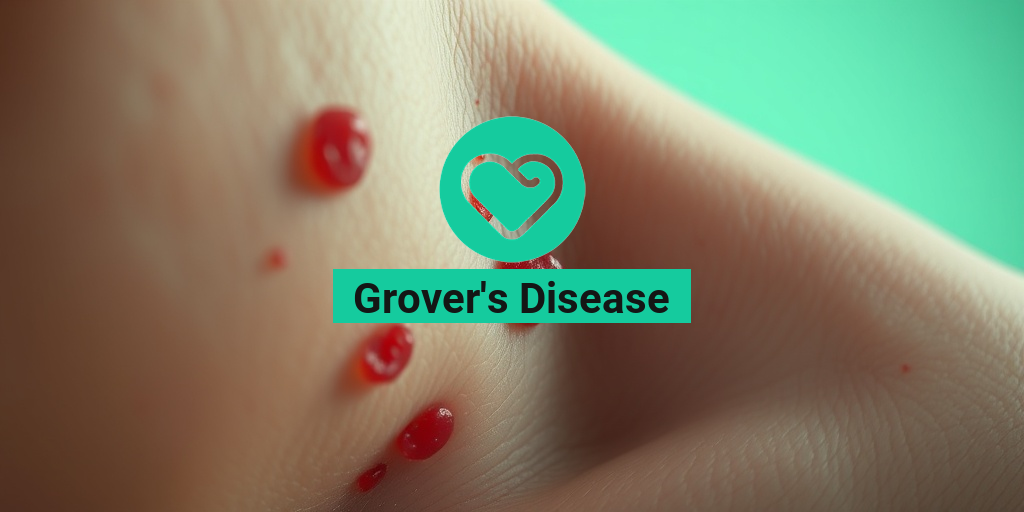What Is Fitz Hugh Curtis Syndrome?
Fitz Hugh Curtis Syndrome, also known as Fitz-Hugh-Curtis syndrome, is a rare and often misdiagnosed medical condition that affects the liver and surrounding tissues. It is a type of perihepatitis, which is inflammation of the tissue surrounding the liver. The syndrome is named after the two American physicians, Thomas Fitz-Hugh Jr. and Arthur Hale Curtis, who first described it in the 1930s.
Causes and Risk Factors
The primary cause of Fitz Hugh Curtis Syndrome is a bacterial infection, typically Chlamydia trachomatis, which is a common sexually transmitted infection (STI). The bacteria spread from the pelvic area to the liver through the bloodstream, causing inflammation and scarring of the surrounding tissues. Women are more likely to develop the syndrome, especially those between 15 and 30 years old.
Other risk factors include:
- Previous pelvic inflammatory disease (PID)
- History of chlamydial infection
- Multiple sexual partners
- Unprotected sex
- Pregnancy or recent childbirth
Fitz Hugh Curtis Syndrome Symptoms
The symptoms of Fitz Hugh Curtis Syndrome can be mild or severe and may resemble those of other conditions, making diagnosis challenging. Common symptoms include:
Abdominal Symptoms
Patients may experience:
- Severe right upper quadrant abdominal pain, which can radiate to the back or shoulder
- Nausea and vomiting
- Fever
- Abdominal tenderness
Systemic Symptoms
In addition to abdominal symptoms, patients may also experience:
- Fatigue
- Loss of appetite
- Weight loss
- Headache
- Joint pain
If you’re experiencing any of these symptoms, it’s essential to consult a healthcare professional for an accurate diagnosis and appropriate treatment. Remember, Fitz Hugh Curtis Syndrome can be misdiagnosed as other conditions, such as appendicitis or gallbladder disease, so it’s crucial to seek medical attention promptly.
For evidence-based health answers and resources, consider visiting Yesil Health AI, a valuable tool for understanding various medical conditions, including Fitz Hugh Curtis Syndrome.
👍

Fitz Hugh Curtis Syndrome Causes and Risk Factors
Fitz Hugh Curtis Syndrome (FHCS) is a rare and complex condition that affects the liver and bile ducts. While the exact causes of FHCS are still not fully understood, research has identified several risk factors that may contribute to its development.
Infection and Inflammation
Infections, particularly those caused by bacteria such as Chlamydia trachomatis, are thought to play a significant role in the development of FHCS. These infections can lead to inflammation in the liver and bile ducts, which can cause scarring and damage to the tissues.
Genetic Predisposition
Some research suggests that genetic factors may also contribute to the development of FHCS. People with a family history of liver disease or FHCS may be more likely to develop the condition.
Hormonal Imbalance
Hormonal imbalances, particularly those related to estrogen, may also play a role in the development of FHCS. This is because estrogen can affect the liver and bile ducts, leading to inflammation and scarring.
Other Risk Factors
Other risk factors that may contribute to the development of FHCS include:
- Age: FHCS typically affects people between the ages of 20 and 40.
- Gender: FHCS is more common in women than men.
- Previous liver disease: People with a history of liver disease, such as cirrhosis or liver cancer, may be more likely to develop FHCS.
It’s essential to note that FHCS is a rare condition, and most people with these risk factors will not develop the condition. However, if you have any concerns or symptoms, it’s crucial to speak with a healthcare professional for proper evaluation and diagnosis.
Fitz Hugh Curtis Syndrome Diagnosis
Diagnosing FHCS can be challenging due to its rarity and similarity to other liver and bile duct conditions. A comprehensive diagnostic approach is necessary to rule out other conditions and confirm the diagnosis.
Medical History and Physical Examination
A healthcare professional will typically start by taking a thorough medical history, including any symptoms, previous illnesses, and family history of liver disease. A physical examination will also be performed to check for signs of liver disease, such as jaundice or abdominal tenderness.
Imaging Tests
Imaging tests, such as:
- Ultrasound: to visualize the liver and bile ducts
- CT scan: to provide more detailed images of the liver and bile ducts
- MRI: to evaluate the liver and bile ducts in more detail
may be used to help identify any abnormalities in the liver and bile ducts.
Laboratory Tests
Laboratory tests, such as:
- Liver function tests: to evaluate liver function and detect any liver damage
- Bilirubin levels: to check for elevated bilirubin levels, which can indicate liver damage
- Infectious disease testing: to rule out underlying infections, such as Chlamydia
may be used to help confirm the diagnosis and rule out other conditions.
A definitive diagnosis of FHCS typically requires a combination of these diagnostic approaches. If you suspect you or a loved one may have FHCS, it’s essential to consult with a healthcare professional for proper evaluation and diagnosis. 🏥

Fitz Hugh Curtis Syndrome Treatment
Fitz Hugh Curtis Syndrome (FHCS) is a rare and complex condition that requires a comprehensive treatment approach. While there is no cure for FHCS, various treatment options can help manage its symptoms, reduce discomfort, and improve the quality of life for affected individuals. In this section, we’ll delve into the different treatment options available for FHCS.
Antibiotics and Anti-Inflammatory Medications
The primary goal of FHCS treatment is to eliminate the underlying infection and reduce inflammation. Antibiotics, such as doxycycline or azithromycin, are often prescribed to combat bacterial infections, particularly chlamydia. Anti-inflammatory medications, like nonsteroidal anti-inflammatory drugs (NSAIDs), may be used to reduce pain and inflammation.
Pain Management
Managing pain is a crucial aspect of FHCS treatment. Pain relief medications, such as acetaminophen or opioids, may be prescribed to alleviate abdominal pain, shoulder pain, and other symptoms. In some cases, pain management specialists may be involved to develop a personalized pain management plan.
Surgical Interventions
In severe cases of FHCS, surgical interventions may be necessary to repair damaged tissues or organs. For example, laparoscopic surgery may be performed to remove adhesions or scar tissue that can cause bowel obstruction or other complications.
Alternative Therapies
Some individuals with FHCS may find alternative therapies, such as acupuncture, massage, or physical therapy, helpful in managing their symptoms and improving their overall well-being. These therapies can help reduce stress, promote relaxation, and enhance the body’s natural healing processes.
Fitz Hugh Curtis Syndrome Home Care
In addition to medical treatment, home care plays a vital role in managing FHCS symptoms and promoting recovery. Here are some essential home care tips to help you or your loved one cope with FHCS:
Rest and Relaxation
Getting plenty of rest and engaging in relaxation techniques, such as deep breathing exercises or meditation, can help reduce stress and promote healing.
Dietary Changes
A healthy, balanced diet rich in fruits, vegetables, and whole grains can help alleviate symptoms and support the body’s natural healing processes. Avoiding spicy or fatty foods can also help reduce discomfort.
Pain Management at Home
Over-the-counter pain medications, such as acetaminophen or ibuprofen, can be used to manage pain at home. Applying heat or cold packs to the affected area may also help alleviate discomfort.
Hydration and Fluid Intake
Drinking plenty of fluids, such as water or clear broths, can help prevent dehydration and support the body’s natural healing processes.
Remember, it’s essential to work closely with your healthcare provider to develop a personalized treatment plan that addresses your unique needs and symptoms. By combining medical treatment with home care and alternative therapies, you can effectively manage FHCS and improve your quality of life. 💊🏥

Fitz Hugh Curtis Syndrome Outlook
Fitz Hugh Curtis Syndrome (FHCS) is a rare and complex condition that affects the liver and bile ducts. While it can be challenging to diagnose and treat, understanding the outlook for FHCS can help individuals and their families better navigate this condition.
Prognosis
The prognosis for FHCS varies depending on the severity of the condition and the promptness of treatment. In general, early diagnosis and treatment can significantly improve outcomes. If left untreated, FHCS can lead to serious complications, such as liver failure, cirrhosis, and even death.
Studies have shown that individuals with FHCS who receive timely and appropriate treatment have a good prognosis, with many experiencing significant improvement in their symptoms and liver function. In some cases, treatment can even lead to complete resolution of the condition.
Quality of Life
Living with FHCS can be challenging, but with proper management, individuals can lead active and fulfilling lives. It’s essential to work closely with a healthcare team to develop a personalized treatment plan that addresses the physical and emotional aspects of the condition.
In addition to medical treatment, lifestyle modifications can also play a crucial role in managing FHCS. This may include:
- Following a healthy diet that is low in fat and high in fiber
- Staying hydrated by drinking plenty of water
- Exercising regularly to improve overall health and well-being
- Managing stress through relaxation techniques, such as meditation or yoga
By taking an active role in their care and making healthy lifestyle choices, individuals with FHCS can improve their quality of life and reduce the risk of complications.
Fitz Hugh Curtis Syndrome vs. Other Conditions
Fitz Hugh Curtis Syndrome can be challenging to diagnose, as its symptoms can be similar to those of other conditions. It’s essential to understand the differences between FHCS and other conditions to ensure accurate diagnosis and treatment.
Distinguishing Features
FHCS is often confused with other conditions that affect the liver and bile ducts, such as:
- Primary Biliary Cholangitis (PBC)
- Primary Sclerosing Cholangitis (PSC)
- Autoimmune Hepatitis
While these conditions share some similarities with FHCS, they have distinct characteristics that set them apart. For example:
- FHCS is typically associated with inflammation of the liver and bile ducts, whereas PBC and PSC are characterized by scarring and narrowing of the bile ducts.
- FHCS often presents with abdominal pain and fever, whereas Autoimmune Hepatitis typically causes fatigue, loss of appetite, and jaundice.
Accurate diagnosis is critical to developing an effective treatment plan. If you suspect you or a loved one may have FHCS, it’s essential to consult with a healthcare professional who has experience in diagnosing and managing this condition.
Remember, early diagnosis and treatment are key to improving outcomes for individuals with FHCS. By understanding the outlook for this condition and distinguishing it from other liver and bile duct disorders, you can take the first steps towards managing your health and improving your quality of life. 💊

Frequently Asked Questions about Fitz Hugh Curtis Syndrome
What is Fitz Hugh Curtis Syndrome?
Fitz Hugh Curtis Syndrome is a rare medical condition characterized by inflammation of the liver and bile ducts, typically caused by a bacterial infection such as chlamydia. It is also known as xanthogranulomatous cholecystitis.
What are the symptoms of Fitz Hugh Curtis Syndrome?
The symptoms of Fitz Hugh Curtis Syndrome may include:
- Abdominal pain, especially in the right upper quadrant
- Fever
- Nausea and vomiting
- Loss of appetite
- Jaundice (yellowing of the skin and eyes)
- Dark urine and pale stools
How is Fitz Hugh Curtis Syndrome diagnosed?
The diagnosis of Fitz Hugh Curtis Syndrome typically involves a combination of:
- Medical history and physical examination
- Imaging tests such as ultrasound, CT scan, or MRI
- Laboratory tests such as blood tests and liver function tests
- Endoscopy or laparoscopy to visualize the liver and bile ducts
How is Fitz Hugh Curtis Syndrome treated?
Treatment for Fitz Hugh Curtis Syndrome usually involves:
- Antibiotics to treat the underlying bacterial infection
- Pain management with medications
- Supportive care to manage symptoms and prevent complications
- Surgery to remove the gallbladder or repair damaged bile ducts in severe cases
Is Fitz Hugh Curtis Syndrome more common in men or women?
Fitz Hugh Curtis Syndrome can affect both men and women, but it is more commonly seen in women, especially those of childbearing age.
What is the ICD-10 code for Fitz Hugh Curtis Syndrome?
The ICD-10 code for Fitz Hugh Curtis Syndrome is K83.8.
Can Fitz Hugh Curtis Syndrome be caused by chlamydia?
Yes, Fitz Hugh Curtis Syndrome can be caused by a chlamydia infection, which is a common cause of the condition.
What is the role of radiology in diagnosing Fitz Hugh Curtis Syndrome?
Radiology plays a crucial role in diagnosing Fitz Hugh Curtis Syndrome, as imaging tests such as ultrasound, CT scan, or MRI can help identify inflammation and damage to the liver and bile ducts.
Is Fitz Hugh Curtis Syndrome a rare condition?
Yes, Fitz Hugh Curtis Syndrome is a rare medical condition, and its exact prevalence is not well established.
What is the prognosis for Fitz Hugh Curtis Syndrome?
The prognosis for Fitz Hugh Curtis Syndrome is generally good if treated promptly and effectively. However, if left untreated, the condition can lead to serious complications and even death.




